Complete Solutions to chapter exercises of chapter VECTORS of Class 11 book with complete answers and questions
| Class 11 | PHYSICS |
| Chapter | Vectors |
| DC PANDEY NEET | chapter exercises |
| Number Of Questions | 100 |
| Academic Year | 2023-24 |
The vector quantily among the following is
View SolutionA vetor is added to an equal and oppsite vector of similar nature,forms a
View SolutionOut og the following quantities,which is scalar?
View SolutionWhich of the followingis a unit vector ?
View SolutionThe component of a vector is
View SolutionThe expression `(1/(sqrt(2))hat(i)+1/(sqrt(2))hat(j))` is a
View SolutionTheposition vector of a moving particle at time t is `r=3hati+4thatj-thatk` Its displacement during the time interval `t=1` s to t=3` s is
View SolutionVector `P=6hati+4sqrt(2)hatj+4sqrt(2)hatk` makes angle from Z-axas equal to
View SolutionGiven :
`vec A = hati + hatj +hatk and vec B =-hati-hatj-hatk` What is the angle between `(vec A - vec B) and vec A` ?
View SolutionWhich of the following Statement is true?
View SolutionThe component of vector `A=2hati+3hatj` along the vector `hati+hatj` is
View SolutionA vector `P=3hati-2hatj+ahatk` is perpendicular to the vector `Q=2hati+hatj -hatk,` The value of a is
View SolutionIf three vector along coordinate axis represent the adjacent sides of a cube of length b, then the unit vector along its diaonal passing thourth the origin will be
View SolutionThe angle between two vectors `-2hati+3hatj+k` and `hati+2hatj-4hatk` is
View SolutionThe angle between the vector `2hati+hatj+hatk and hatj`?
View SolutionWhat is the angle between `hati+hatj+hatk and hatj`?
View SolutionWhich of the following is the unit vector perpendicular to `vec(A)` and `vec(B)`?
View SolutionIf `(|a+b|)/(|a-b|)=1`, then the angle between `a` and `b` is
View SolutionA man walk 20 m at an angle` 60^(@)` north of east . How far towards east has he he travellled ?
View SolutionIf A=B , then which of the following is not correct ?
View SolutionThe area of the parallelogram represented by the vectors `vecA=2hati+3hatj` and `vecB=hati+4hatj` is
View SolutionThe forces, which meet at one point but their line of action do not lie in one plane,are called
View SolutionIf the angle between two vectors A and B is `120^(@)`, then its resultant C will be
View SolutionThe condition under which the vector (a+b) and (a-b) are parallel is
View SolutionA body, under the action of a force `vec(F)=6hati -8hatj+10hatk` , acquires an acceleration of `1ms^(-2)` . The mass of this body must be.
View SolutionThe vector sum of two forces is perpendicular to their vector differences. In that case, the forces
View SolutionThe resultant of ` vec(a)` and ` vec(b)` makes `alpha` with `vec(a)` and `beta` with `vec(b)`, then (a,b represent magnitudes of respective vectors) :
View SolutionTwo equal vector have a resultant equal to either of them, then the angle between them will be:
View SolutionIf A and B are Two non -zero vector having equal magnitude , the angle between the vector A and A-B is
View SolutionThe angle between `vecA = hati + hatj and vecB = hati - hatj` is
View SolutionFive equal forces of `10 N` each are applied at one point and all are lying one plane. If the angles between them are equal, the resultant force will be
View SolutionTwo vectors `vec(A) and vec(B)` inclined at an angle `theta` have a resultant `vec(R )` which makes an angle `alpha` with `vec(A)`. If the directions of `vec(A) and vec(B)` are interchanged, the resultant will have the same
View SolutionWhat is correct ?
View SolutionResultant of which of a following may be equal to zero?
View SolutionA man first moves 3 m due east , them 6 m due north and finally 7 m due west , then the magnitude of the resultant displacement is (in metre)
View SolutionThe resultant of two forces 3P and 2P is R. If the first force is doubled then resultant is also doubled.The angle between the two forces is
View SolutionTwo forces 8 N and 12 act ay `120^(@)` The third force required to keep the body in equilbrium is
View SolutionIf A.B =0 and `AxxB =1 ` , then A and B are
View SolutionIf `P+Q=R and |P|=|Q|= sqrt(3) and |R| ==3 ,` then the angle between P and Q is
View SolutionThe component of a vector `r` along X-axis will have maximum value if
View SolutionSix vectors a to f have the magnitude and direction indicated in the figure. Which of the following statement in true ?
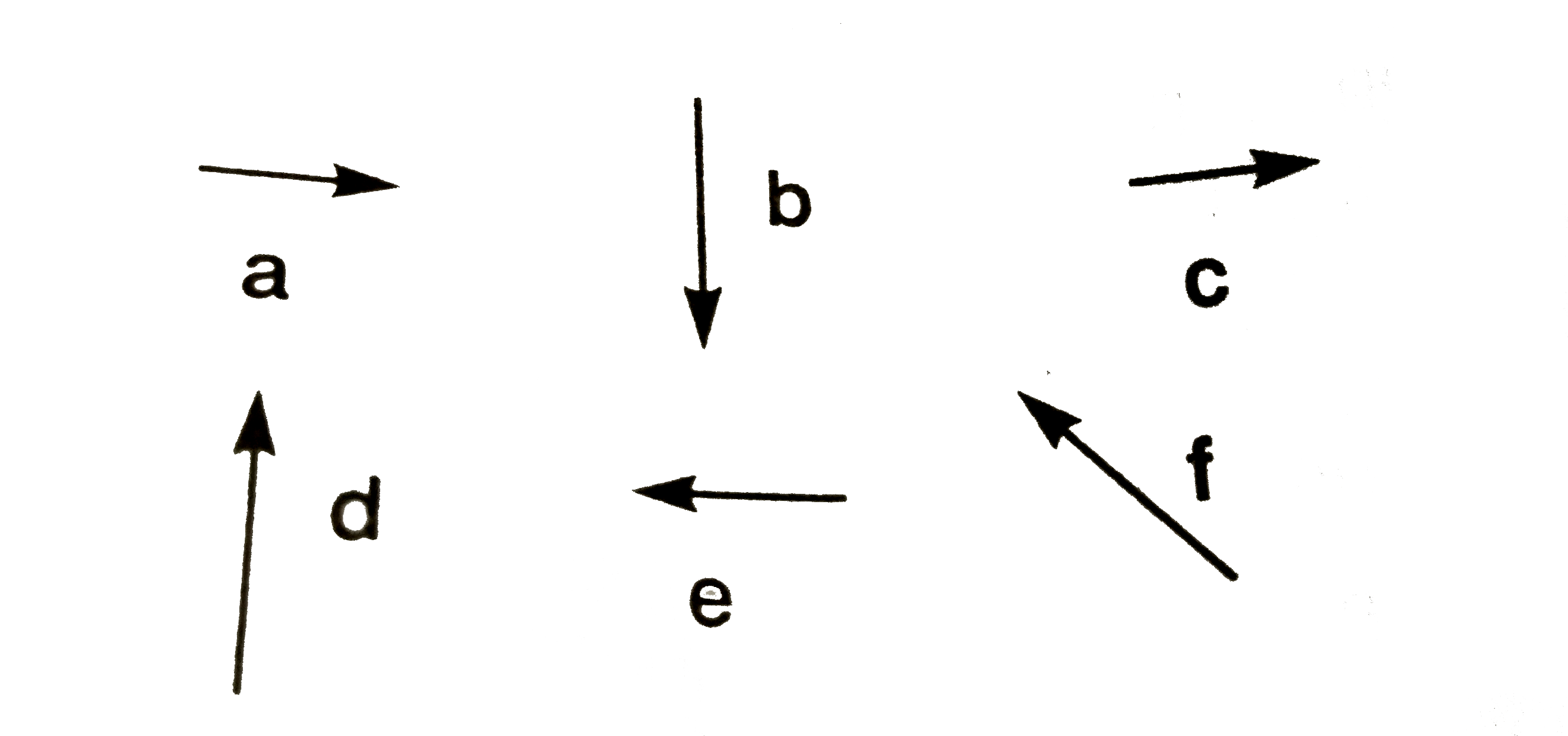
View SolutionA paricle starting from the origin (0,0) moves in a straight line in `(x,y)` plane. Its coordinates at a later time are `(sqrt(3),3)`. The path of the particle makes with the x-axis an angle of
View SolutionConsider a vector `vecF=4hati-3hatj`. Another vector that is perpendicular to `vecF` is
View SolutionThe angle between vectors `(AxxB)and(BxxA)` is
View SolutionThe angle between vectors `(AxxB)and(BxxA)` is
View SolutionUnit vector perpnicular to vector `A=-3hati-2hatj -3hatk and 2hati + 4hatj +6hatk` is
View SolutionUnit vector parallel to the resultant of vector `8hati` and `8hatj` will be
View SolutionA force of `5 N` acts on a particle along a direction making an angle of `60^(@)` with verticle. Its verticel components is
View SolutionIf `vecA=3hati+4hatj` and `vecB=7hati+24hatj`, find a vector having the same magnitude as `vecB` and parallel and same direction as `vecA`.
View SolutionThe vector that must be added to the vector `hati-4hatj+2hatk` and `3hati+3hatj-7hatk` so that the resultant vector is a unit vector along the y-axis is
View SolutionA vector is represented by `3hati+hatj+2hatk`. Its length in `XY` plane is
View SolutionLet `vec(A) = hat(i)A cos theta + hat(j) sin theta`, be any vector. Another vector `vec(B)` which is normal to `vec(A)` is :
View SolutionIf two vectors `2hati+3hatj-hatk` and `-4hati-6hatj-lamdahatk` are parallel to each other then value of `lamda` be
View SolutionWhat is the angle between `(vec(P)+vec(Q))` and `(vec(P)xxvecQ)?`
View SolutionIf a unit vector is represented by `0.5 hat(i) + 0.8 hat(j) + c hat(k)` , then the value of `c` is
View SolutionIf `A =a_(1) hat"i"+ b_(1)hat"j"and B=a_(2)hat"i"+b_(2)hat"j"` the condition that they are perpendicula to each other is
View SolutionFor what value of x , will the two vector `A= 2hati + 2hatj -x hatk and B =2 hati - hatj - 3hatk ` are perpendicular to each other ?
View SolutionA and B are two vector given by `A= 2hati +3hatjand B=2hati+4hatj` The magnitude to the component of A along B is
View SolutionThe value of x and y for which vector `A= (6hati+xhatj-2hatk)and B=(5hati+6hatj-yhatk)` may be parallel are
View SolutionThe angles which the vector `A=3hati + 6hatj+2hatk` makes with the co-ordinate axes are
View SolutionA particle is moving on a circular path with constant speed v then the change in its velocity after it has described an angle of `60^(@)` will be
View SolutionFind the resultant of the three vectors `vec(OA), vec(OB)` and `vec(OC)` shown in figure. Radius of the circle is R.
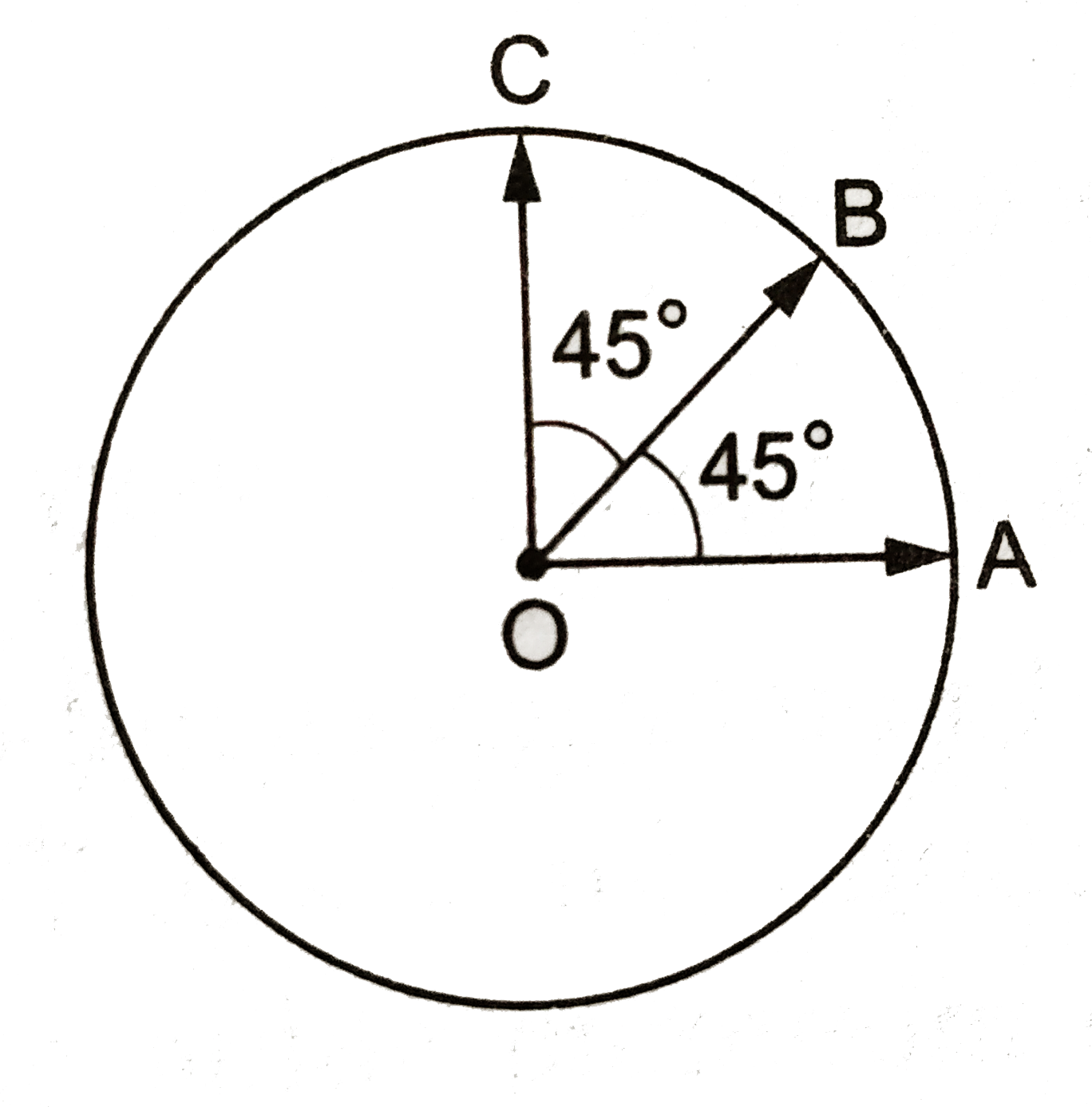
View SolutionResultant of two vector of equal magnitude A is
View SolutionIf `ahati +bhatj` is a unit vector and it is perpendicular to `hati +hatj` , then value of a and b is
View SolutionIf `a+b+c=0, "then "axxb ` is equal to
View SolutionConsider a force vector `F=hati+ hatj + hatk ` Another vector perpendicular to F is
View SolutionA vector perpendicular to both the vector `2hati -3hatj and 3hati - 2hatj ` is
View SolutionIf `vecA=4hati-3hatj` and `vecB=6hati+8hatj` then magnitude and direction of `vecA+vecB` will be
View SolutionWhen a force F acts on a body of mass m the acceleration product in the body is a . If three equal forces `F_(1)=F_(2)=F_(3)=F` act on the same body as shown in figure the acceleration produced is
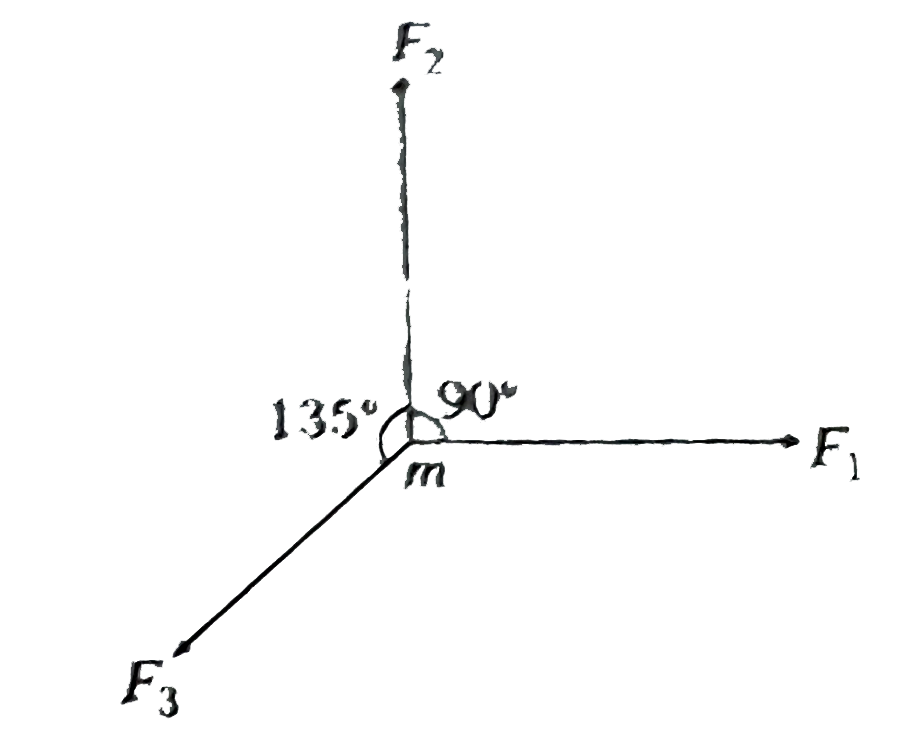
View SolutionObtain the magnitude and direction cosines of vector `(A-B),` if `A=2hati+3hatj+hatk, B=2hati+2hatj+3hatk`
View SolutionTwo vectors having equal magnitudes A make an angle `theta` with each other. Find the magnitude and direction of the resultant.
View Solution`12` coplanar non collinear forces (all of equal magnitude) maintain a body in equilibrium, then angle between any two adjacent forces is
View SolutionGiven that `vecA+vecB+vecC=0`, out of three vectors two are equal in magnitude and the magnitude of third vector is `sqrt2` times that of either of two having equal magnitude. Then angle between vectors are given by
View SolutionTwo vectors `A` and `B` are such that `A+B = C` and `A^2 +B^2 = C^2`. If `theta` is the angle between positive direction of `A` and `B`, then the correct statement is
View SolutionGiven `A= 3hati+4hatj and B=6hati+8hatj ` which of the following statement is correct ?
View SolutionIf a vector `vec(A)` make angles `alpha , beta ` and `gamma`, respectively , with the `X , Y` and `Z` axes , then `sin^(2) alpha + sin^(2) beta + sin^(2) gamma =`
View SolutionIf vector A and B have an angle `theta` between them, then value of `|hatA -hatB|` will be ,
View SolutionA particle undergoes three successive displacements given by `s_(1) =sqrt(2)` m north - east , `s_(2)=2` m due south and `s_(3) =4 m, 30^(@)` north of west , then magnitude of net displacement is
View SolutionThe resultant of A and B is `R_(1)` On reversing the vector B , the resultant `R_(2)` what is the value of `R_(1)^(2)+ R_(2)^(2)`?
View SolutionIf the sum of two unit vectors is a unit vector, then magnitude of difference is-
View SolutionThe sum of two vectors A and B is at right angles to their difference. Then
View SolutionA vector having magnitude 30 unit makes equal angles with each of X,Y, and Z -axes The components of vector along each of X,Y,and Z -axes are
View SolutionA number of vectors are as shown in .They can be combined in various ways , like `vec(A) + vec(C ) = vec(B)` . What is the value of (a) `vec(E ) + vec(C ) ` (b) `vec(A) + vec(F) ` (c ) `vec(A) + vec(D) ` (d) `vec(E ) + vec(A)` (e ) `vec(A) - vec(B)` .
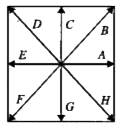
View SolutionIf A is a unit vector in a given direction then the value of `hatA.(dhatA)/(dt)` is
View SolutionIf `F_(1) and F_(2)` are two vectors of equal magnitudes F such that `|F_(1).F_(2)|= |F_(1)xxF_(2)|, "then"|F_(1) +F_(2)|` equals to
View SolutionFigure show's three vectors p,q and r where C is the mid - point of AB Then which of the following relation is correct ?
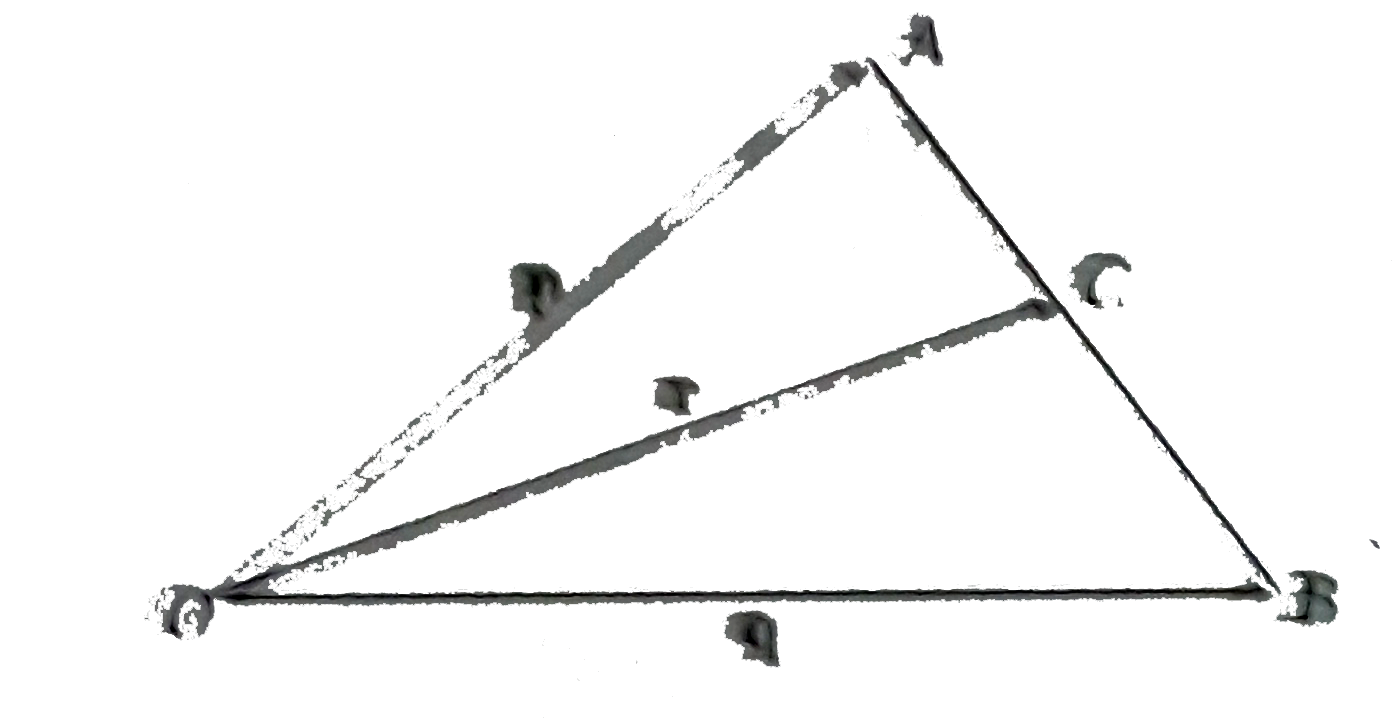
View SolutionWhat is the angle between P and Q the cross product of `(P+Q)and (P-Q)`?
View SolutionThe resultant of two vectors `vec(P)` and `vec(Q)` is `vec(R)`. If `vec(Q)` is doubled then the new resultant vector is perpendicular to `vec(P)`. Then magnitude of `vec(R)` is :-
View SolutionThe angle between the vector `vec(A)` and `vec(B)` is `theta`. Find the value of triple product `vec(A).(vec(B)xxvec(A))`.
View SolutionThe sum of the magnitudes of two forces acting at a point is 18 and the magnitude of their resultant is 12. If the resultant is at `90^(@)` with the force of smaller magnitude, What are the magnitudes of forces?
View SolutionA vector `vec(a)` is turned without a change in its length through a small angle `d theta`. Find the value of `|Deltavec(a)|`
View SolutionA force `F= -khati+xhatj` where k is a positive constant, acts on a praricle moving in the xy plane. Starting from the origin, the particle is taken along the positive x - axis to the point (a,0) and then parallel to the y-axis to the point (a,a) the total work done by the formce on the particle is
View SolutionFor the figure shown
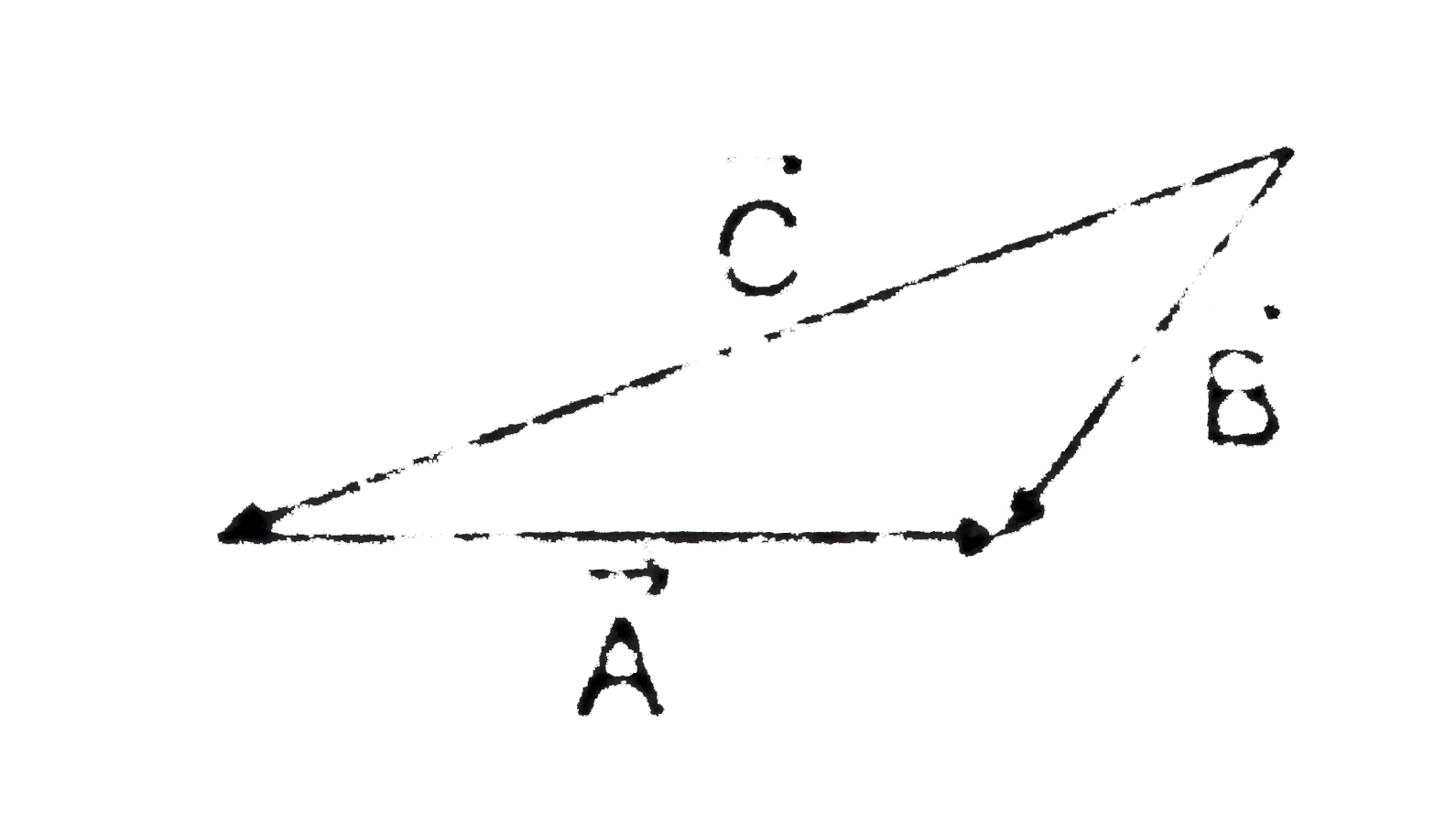 .
.
View SolutionIf a and b are two vectors.then the value of `(a+b)xx(a-b)` is
View SolutionGiven that `vec(A)+vec(B)=vec(C )` and that `vec(C )` is perpendicular to `vec(A)` Further if `|vec(A)|=|vec(C )|`, then what is the angle between `vec(A)` and `vec(B)`
View SolutionThe resultant of two forces,one double the other in magnitude,is perpendicular to the smaller of the two forces.The angle between the two forces is
View SolutionIf `A+B=C,|A|=2|B|and B.C=0,` then
View SolutionTwo unit vector when added give a unit vector . Then choose the correct statement.
View SolutionWhich one of the following statement is true?
View SolutionFigure shows the orientation of two vectors `u` and `v` in the `XY` plane.
if `vecu=ahati+bhatj` and `vecv=p hati+qhatj`
which of the following is correct?
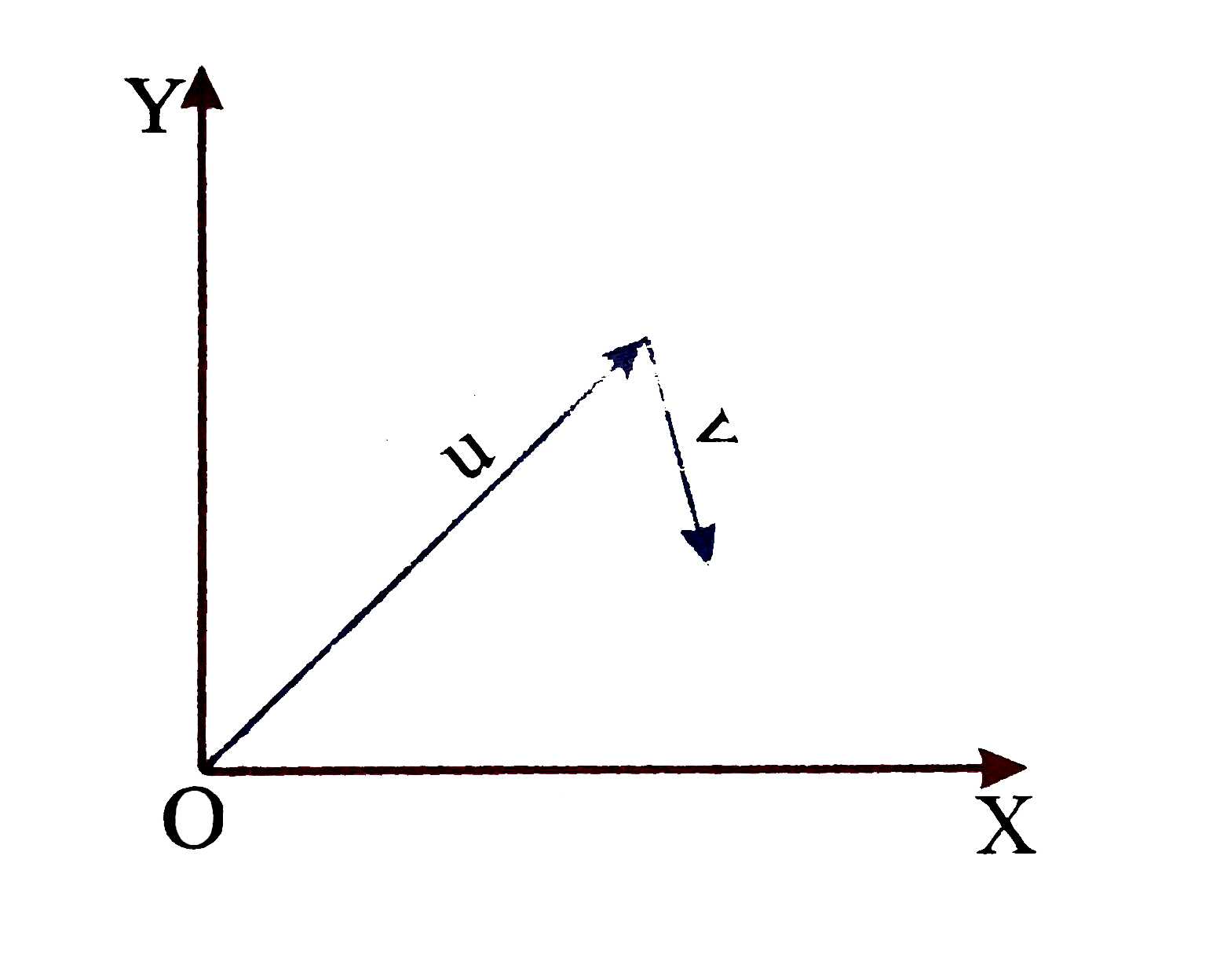
View Solution
chapter exercises questions and complete solutions for chapter VECTORS of DC PANDEY ENGLISH of Class 11